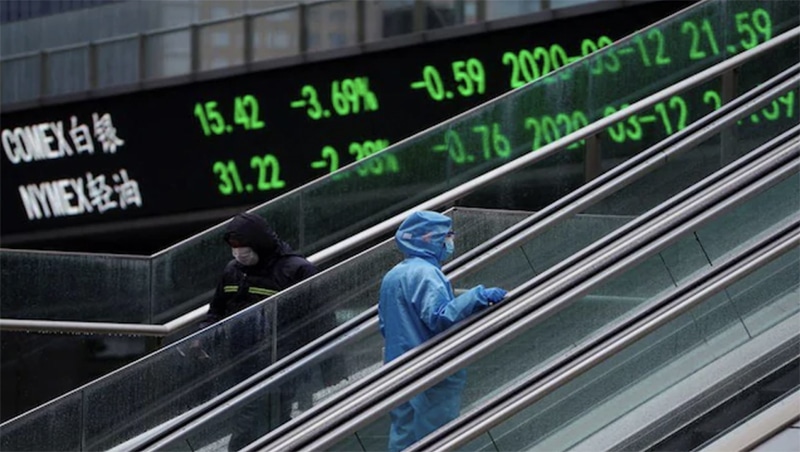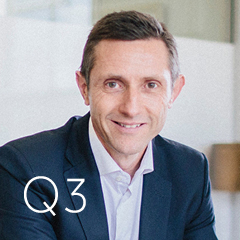
The dramatic turnaround in global equity markets from the coronavirus-induced slump in March continued in the September quarter, although prices fell back in the final month of the quarter after global benchmarks hit record highs.
News headlines in the quarter were dominated on the one hand by hopes of a global economic recovery and progress in the development of a COVID-19 vaccine, and on the other hand by stop-start efforts to contain the pandemic.
Caution also started to emerge later in the quarter ahead of the US presidential election in November as media focused on the prospect of a disputed result.
Policymakers such as the Reserve Bank of Australia noted that while the global economy was bouncing back from the severe contraction caused by the pandemic, the recovery was uneven and dependent on containment of the virus.
The US Federal Reserve made similar comments in September, vowing to keep interest rates near zero until 2023. While the recovery had progressed more quickly than expected, it said activity was still well below pre-pandemic levels.
The economic impacts of virus-induced lockdowns were evident in GDP reports for Australia, where activity shrank by a record 7% in the June quarter. It is Australia’s first recession in 30 years.
Nevertheless, equities’ recovery from March’s severe sell-off continued. By late August, the Global MSCI All Country World Index had surpassed the previous record high set in February, representing a near 50% recovery from the March 20 lows. Global stocks were up nearly 4% on the quarter in AUD terms.
The Australian market has been a comparative underperformer in 2020. While it recovered more than 30% from the March lows, it delivered flat returns in the September quarter, to be down around 10% for the year to date.
Small company stocks were a standout for Australia in Q3, outpacing large for the second quarter in a row. Cheaper priced value stocks continued to lag higher priced growth and momentum stocks across the board.
With its economy emerging from the pandemic faster than most others, China was one of the top performers in emerging markets in the September quarter. Emerging markets overall outpaced developed markets.
In sectoral terms, consumer discretionary and IT stocks led gains globally, while energy and financials continued to struggle, as did real estate investment trusts outside Australia.
In the bond market, a strong credit premium and a more modestly positive term premium boosted returns. The AUD and EUR yield curves delivered the highest returns in Q3, while corporates beat government bonds.
The US dollar weakened over the quarter, although gained some ground back in September. With the AUD mostly stronger, overseas returns for hedged investors were about three percentage points better overall.
What Dominated the News

The following news summary is not intended to explain the markets’ performance in the quarter, but to provide some perspective about what dominated headlines:
Select Headlines
July
- Russians Grant Putin the Right to Extend His Rule Until 2036
- Melbourne Heads Back into Coronavirus Lockdown
- Trump Ends Preferential Treatment for Hong Kong over Security Law
- European Union Agrees to $US870bn Stimulus Package
- Global Cases of COVID-19 Top 17m with 670,000 Dead
August
- US S&P 500 Hits Record High After 50% Rally from March Lows
- AMP Chairman Quits Over Handling of Harassment Case
- Ailing Abe Quits as Japan PM as COVID-19 Slams Economy
- US Federal Reserve to Tolerate Higher Inflation in Major Policy Shift
- Global Cases of COVID-19 Top 25m with 842,000 Dead
September
- Australia Enters its First Recession in Nearly 30 Years
- Stock Market Volatility Hits Highest Since June Amid Tech Sell-Off
- UK Announces Plan to Override Parts of Brexit Withdrawal Deal
- Trump Refuses to Commit to Peaceful Transition of Power
- Global Cases of COVID-19 Top 35m with 1m Dead
Minchin Moore Portfolio Strategies

The year to 30 September was a year of upheaval and changing fortunes for investment portfolios. Nevertheless, our Balanced portfolio model (a theoretical portfolio used to guide our decisions managing client portfolios) delivered a return of around -3%.
The rolling 12 month return for diversified Balanced portfolios changed considerably through the course of the year, ranging from +14% to -9%, as did the leader board rankings of asset class returns.
For the 12 months to 30 September, the majority of the asset classes that make up portfolios were showing positive returns (Cash, Global Bonds, Australian Credit, and International Equities), however Australian shares were notably negative (-10%) as were real estate investment trusts (REITs) (-20%). Commercial property has been one of the hardest hit industry groups through COVID as future expected earnings for office and retail properties have contracted sharply.
Some of the most prominent investment themes affecting markets have been: very low cash and bond yields, a severe escalation in credit risk followed by an equally sharp (although incomplete) recovery, and the ongoing rally in the high PE, growth stocks (principally technology stocks). Notably, the very strong rally in tech stocks has dragged market indices (particularly the S&P500) higher and masked the extent of underperformance in the more traditional, industrial sectors.
These themes have created negative and positive effects in our investment portfolios.
Pleasingly our ‘Industry Equal Weight’ (IEW) approach to managing direct Australian share portfolios has done a good job of protecting capital and capturing the upward momentum in the strongly performing technology and healthcare sectors. Moreover, this strategy has also minimised the damage inflicted by the poor performance of bank stocks. On its own, the IEW group of stocks delivered an aggregate return of 1.8% for the 12 months to 30 September. This compared favourably to the S&P/ASX100 Accumulation Index which was down -10.8% for the period.
On the other side of the ledger, our ‘Value’ tilts in both Australian and International shares have not fared so well. By definition ‘value stocks’ are those that display a lower price to earnings ratio (PE) and have a low market price relative to the book value of their assets. Long term evidence suggests these cheaper, out of favour stocks tend to outperform the broader market in the long run. However, right now the value style is experiencing its longest ever period of underperformance relative to the growth style. The underlying reason for this is that the value group of stocks does not include the expensive, high PE group of technology companies that have been the driving force behind market gains in the past few years. In international equities these stocks include the FAANGs (FaceBook, Apple, Amazon, Netflix and Google) and in the Australian market they include market darlings such as AfterPay and Xero. In International equities, the value style has underperformed by around 20% and in the Australian market around 8% in the year to the 30th of September.
As always, we continue to systematically rebalance client portfolios back to their designated benchmark weights for each asset class – reducing exposure to the recent strong performers and topping up the laggards. Over the past year this has seen us selling equities and buying bonds (pre-COVID) and then doing the reverse since COVID.
Sustainability

Sustainable Investing can be thought of as investing in a way that directs capital to improve social and environmental sustainability. This style of investing is often linked to the United Nations Sustainable Development Goals (UNSDGs) which aim to promote prosperity while protecting the planet. The UNSDGs aim to address a range of social needs including education, health, social protection, and job opportunities, while tackling climate change and environmental protection.
At the ‘light touch’ level, Sustainable Investing may involve taking a ‘doing no harm’ approach by screening out and the so called “sin industries” from the investment universe. At a deeper level, it may additionally involve actively allocating capital across the full spectrum of the investment universe based on how each company is performing on environmental, social and governance (ESG) metrics – that is, incrementally increasing the portfolio weighting to companies and industries who score well, whilst reducing exposure to companies and industries that score poorly.
Our ‘light touch’ Sustainability approach involves stripping out “sin industries” such as gambling, tobacco, armaments, and pornography as well as actively allocating investment weightings based on ESG criteria. The outcome of this approach is a portfolio containing very little fossil fuel exposure and a higher weighting to companies that score well on social and governance grounds.
Whilst the Sustainability style is primarily aimed at satisfying an investor’s conscience and better aligning their portfolios with their personal values, a by-product of this approach has been strong outperformance in recent years. The year to 30 September has seen portfolios structured along Sustainability lines outperform Agnostic portfolios by around 4%.
Whilst the jury is still out on whether the Sustainability style will produce higher returns in the longer run, we do believe that investing through a ‘light touch’ sustainability framework can be done at no long term economic cost to the investor (i.e. it shouldn’t compromise risk/return).
Should you have an interest in exploring Sustainable Investing more thoroughly, please talk to your adviser.

